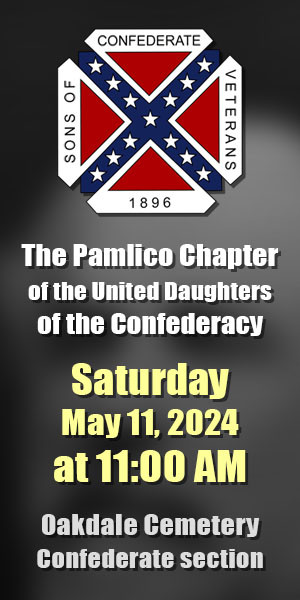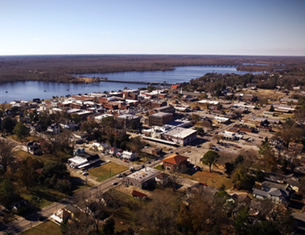Your Basic Needs: Food, Shelter and The TRUTH
Birds of Paradise: The Moral Poverty of Faculty Freedom Fighters
Publisher's Note: This post appears here courtesy of The James G. Martin Center. The author of this post is Michael J. Pearce.
Carl Dobsky's brilliant, fiery painting "Birds of Paradise" has been the focus of attention at his recent exhibitions, because it accurately and effectively captures the zeitgeist of contemporary American life. The painting is set in the backyard of a bourgeois Los Angeles home, where a laughing group of partying Angelinos drink red wine from large glasses, snort lines of cocaine, and shoot selfies against the burning backdrop of an uncontrolled wildfire pouring destructive rage over the brush and houses covering the Hollywood Hills. Soon, the flames will scorch the landscape around the pool and turn the home into another tornado of fire, but the partiers will have moved to another place and will continue eternally.
Satirical paintings are always open to interpretation, but this one is especially biting and points a sharp finger at American elites who disregard the heralding of a catastrophic future. Although its message could be equally well directed at the cream of the entertainment business, at journalists, or at politicians, Dobsky's work is especially meaningful to close observers of the slow-motion collapse of private liberal-arts institutions, who are keenly aware of the dissonant devil's tritone of recruitment, social justice, and education.
A catastrophic demographic fire is sweeping over private universities like a tsunami. But faculty social-justice warriors, delighting in their supremacy, pay no attention. The economist Nathan D. Grawe projects that the population of 18-year-olds in huge swaths of the United States will decline by as much as 15% between 2012 and 2029. Including mature students in enrollment calculations makes little difference, lifting only a handful of states on Grawe's heat-map out of fire-alarm red and into the more benevolent yellows heralding a tiny increase. For the majority of private institutions, the outlook is grim. Grawe predicts that the number of students who will attend post-secondary institutions will plummet by 292,073 individuals between 2012 and 2029, a decline of 11%. Worst hit will be New England, which will see a decline of 24%.
Snugly tucked behind an azure moat and the fortifications of an ivory tower, complacent tenured faculty imagine themselves as virtuous warriors fighting for the fashionable issues of contemporary agitation. Within their imaginary world, they are safely protected from real life, making glib pronouncements about social-justice issues and enforcing internal compliance. Hallucinatory articles like 2020's "Is Academe Awash in Liberal Bias?," published in the Chronicle of Higher Education by Naomi Oreskes and Charlie Tyson, or Dave Tomar's "Why Are Colleges So Liberal?" claim that all is well, despite decades of evidence showing increasing faculty bias in favor of the Left, as well as repeated examples of hood-and-gown "justice" aimed at conservatives. Disagreement with the incontestably political orientation of social-justice activists is cause for dismissal, regardless of the right to free speech, the tradition of scholarly disagreement, or the protections of tenure. The woke religion has infected the academy.
Bickering about bias, however, is a distraction from the most important priority facing colleges in our time. Like Dobsky's partiers, the faculty fiddle with social justice while Rome burns. A demographic wildfire is rolling towards the American liberal arts, but, like sheep trotting to their slaughter, many professors have chosen to ally themselves to the woke faith instead of focusing on the real problem of recruitment. Since 2016, 75 nonprofit colleges and universities have closed their doors or been eaten by larger institutions.
In addition to neglecting the apocalyptic death-threat of declining enrollment, which will doubtless cause the closure of many more institutions, the American liberal-arts academy has embraced a model for education that produces inferior results. Professors believe that education should serve a curative purpose, following the century-old ideas of their guru, John Dewey. Dewey believed that education would solve all the problems of society. Instead, Dewey's disciples have turned the American liberal arts into a nightmare. It was Dewey who proposed the misguided idea that everybody's experience was of equal value and worth. The consequence of this disastrous idea has been that, instead of raising students toward excellence, universities have lowered the bar to accommodate everyone.
It is a matter of evangelical necessity for faculty to join the fashionable chorus in singing the virtue of this mission on institutional websites and in institutional governance. Their vision for transformation is turned outward to the broken world and inward to a microcosmic utopia for the likeminded. But even within their fantasy towers, liberal-arts faculty and administrators fail to address the abuse under their noses.
Despite their fervent zeal for solving the world's problems, tenure-track faculty at private liberal-arts colleges are oblivious to and careless of the shocking and unjust treatment of their adjunct colleagues. According to the AAUP's Annual Report on the Economic Status of the Profession, 2020-21, a disproportionate number of women and people of color held contingent appointments, and of the 650,000 workers who lost their jobs in higher education between February 2020 and February 2021, 58% were women, and 56% were people of color.
In 2012, the Coalition on the Academic Workforce published a comprehensive survey of contingent faculty, gathering information about the courses they taught in 2010, as well as their pay and benefits. Making up 75.5% of the academic workforce, adjuncts were paid a median wage of $2,700 per course. It is difficult to know if there has been any improvement since 2012, as universities have no obligation to report data on contingent faculty members' compensation. However, contingent faculty were not paid, by and large, for the many hours they worked to adjust to teaching online during the pandemic. They frequently receive no retirement or medical-benefit contributions, and they often have no right to unemployment insurance.
Adjuncts' miserable stipends have not followed catastrophic inflation. They are forced to commute for hours from campus to campus to scrape a moonlighter's living, and they are given little respect by their colleagues. A 2020 American Federation of Teachers report, titled "An Army of Temps," revealed that 63.7% of adjuncts earned less than $50,000 per year for their piecework labor, working beside full-time faculty as indentured servants on the edge of poverty. The report further stated that "one-third of respondents earn[ed] less than $25,000 a year, placing them below the federal poverty guideline for a family of four." 25% of adjuncts and contingent faculty reported relying on public assistance. In March, UCLA advertised an adjunct "job" that paid nothing. What is the response from the social-justice warriors to this outrageous inequity? Crickets.
Yet even full-time faculty at liberal-arts institutions have little to brag about. Although many of them believe that they are members of a liberal elite, their salaries fall between $77,686 and $153,567. According to Business Insider, in 2022, a household of four needs to make between $60,000 and $180,000 to qualify as middle class, positioning most liberal-arts faculty firmly in the bottom or middle of the bourgeoisie. After adjusting for inflation, the real value of their pay decreased by 0.4% in 2020.
Newly appointed assistant professors live on between $49,064 and $76,368 a year. American roofers make a better salary than American assistant professors in the liberal arts, and they don't need half a million dollars in student-loan debt to teach them how to drive a nail. Meanwhile, in April, the median price of a house in Los Angeles reached $900,000.
The fire is coming.
Michael J. Pearce is a professor of art at California Lutheran University, the founder and chair of The Representational Art Conference (TRAC), and the author of Art in the Age of Emergence.
Go Back
Carl Dobsky's brilliant, fiery painting "Birds of Paradise" has been the focus of attention at his recent exhibitions, because it accurately and effectively captures the zeitgeist of contemporary American life. The painting is set in the backyard of a bourgeois Los Angeles home, where a laughing group of partying Angelinos drink red wine from large glasses, snort lines of cocaine, and shoot selfies against the burning backdrop of an uncontrolled wildfire pouring destructive rage over the brush and houses covering the Hollywood Hills. Soon, the flames will scorch the landscape around the pool and turn the home into another tornado of fire, but the partiers will have moved to another place and will continue eternally.
Satirical paintings are always open to interpretation, but this one is especially biting and points a sharp finger at American elites who disregard the heralding of a catastrophic future. Although its message could be equally well directed at the cream of the entertainment business, at journalists, or at politicians, Dobsky's work is especially meaningful to close observers of the slow-motion collapse of private liberal-arts institutions, who are keenly aware of the dissonant devil's tritone of recruitment, social justice, and education.
A catastrophic demographic fire is sweeping over private universities like a tsunami. But faculty social-justice warriors, delighting in their supremacy, pay no attention. The economist Nathan D. Grawe projects that the population of 18-year-olds in huge swaths of the United States will decline by as much as 15% between 2012 and 2029. Including mature students in enrollment calculations makes little difference, lifting only a handful of states on Grawe's heat-map out of fire-alarm red and into the more benevolent yellows heralding a tiny increase. For the majority of private institutions, the outlook is grim. Grawe predicts that the number of students who will attend post-secondary institutions will plummet by 292,073 individuals between 2012 and 2029, a decline of 11%. Worst hit will be New England, which will see a decline of 24%.
Snugly tucked behind an azure moat and the fortifications of an ivory tower, complacent tenured faculty imagine themselves as virtuous warriors fighting for the fashionable issues of contemporary agitation. Within their imaginary world, they are safely protected from real life, making glib pronouncements about social-justice issues and enforcing internal compliance. Hallucinatory articles like 2020's "Is Academe Awash in Liberal Bias?," published in the Chronicle of Higher Education by Naomi Oreskes and Charlie Tyson, or Dave Tomar's "Why Are Colleges So Liberal?" claim that all is well, despite decades of evidence showing increasing faculty bias in favor of the Left, as well as repeated examples of hood-and-gown "justice" aimed at conservatives. Disagreement with the incontestably political orientation of social-justice activists is cause for dismissal, regardless of the right to free speech, the tradition of scholarly disagreement, or the protections of tenure. The woke religion has infected the academy.
Bickering about bias, however, is a distraction from the most important priority facing colleges in our time. Like Dobsky's partiers, the faculty fiddle with social justice while Rome burns. A demographic wildfire is rolling towards the American liberal arts, but, like sheep trotting to their slaughter, many professors have chosen to ally themselves to the woke faith instead of focusing on the real problem of recruitment. Since 2016, 75 nonprofit colleges and universities have closed their doors or been eaten by larger institutions.
In addition to neglecting the apocalyptic death-threat of declining enrollment, which will doubtless cause the closure of many more institutions, the American liberal-arts academy has embraced a model for education that produces inferior results. Professors believe that education should serve a curative purpose, following the century-old ideas of their guru, John Dewey. Dewey believed that education would solve all the problems of society. Instead, Dewey's disciples have turned the American liberal arts into a nightmare. It was Dewey who proposed the misguided idea that everybody's experience was of equal value and worth. The consequence of this disastrous idea has been that, instead of raising students toward excellence, universities have lowered the bar to accommodate everyone.
It is a matter of evangelical necessity for faculty to join the fashionable chorus in singing the virtue of this mission on institutional websites and in institutional governance. Their vision for transformation is turned outward to the broken world and inward to a microcosmic utopia for the likeminded. But even within their fantasy towers, liberal-arts faculty and administrators fail to address the abuse under their noses.
Despite their fervent zeal for solving the world's problems, tenure-track faculty at private liberal-arts colleges are oblivious to and careless of the shocking and unjust treatment of their adjunct colleagues. According to the AAUP's Annual Report on the Economic Status of the Profession, 2020-21, a disproportionate number of women and people of color held contingent appointments, and of the 650,000 workers who lost their jobs in higher education between February 2020 and February 2021, 58% were women, and 56% were people of color.
In 2012, the Coalition on the Academic Workforce published a comprehensive survey of contingent faculty, gathering information about the courses they taught in 2010, as well as their pay and benefits. Making up 75.5% of the academic workforce, adjuncts were paid a median wage of $2,700 per course. It is difficult to know if there has been any improvement since 2012, as universities have no obligation to report data on contingent faculty members' compensation. However, contingent faculty were not paid, by and large, for the many hours they worked to adjust to teaching online during the pandemic. They frequently receive no retirement or medical-benefit contributions, and they often have no right to unemployment insurance.
Adjuncts' miserable stipends have not followed catastrophic inflation. They are forced to commute for hours from campus to campus to scrape a moonlighter's living, and they are given little respect by their colleagues. A 2020 American Federation of Teachers report, titled "An Army of Temps," revealed that 63.7% of adjuncts earned less than $50,000 per year for their piecework labor, working beside full-time faculty as indentured servants on the edge of poverty. The report further stated that "one-third of respondents earn[ed] less than $25,000 a year, placing them below the federal poverty guideline for a family of four." 25% of adjuncts and contingent faculty reported relying on public assistance. In March, UCLA advertised an adjunct "job" that paid nothing. What is the response from the social-justice warriors to this outrageous inequity? Crickets.
Yet even full-time faculty at liberal-arts institutions have little to brag about. Although many of them believe that they are members of a liberal elite, their salaries fall between $77,686 and $153,567. According to Business Insider, in 2022, a household of four needs to make between $60,000 and $180,000 to qualify as middle class, positioning most liberal-arts faculty firmly in the bottom or middle of the bourgeoisie. After adjusting for inflation, the real value of their pay decreased by 0.4% in 2020.
Newly appointed assistant professors live on between $49,064 and $76,368 a year. American roofers make a better salary than American assistant professors in the liberal arts, and they don't need half a million dollars in student-loan debt to teach them how to drive a nail. Meanwhile, in April, the median price of a house in Los Angeles reached $900,000.
The fire is coming.
Michael J. Pearce is a professor of art at California Lutheran University, the founder and chair of The Representational Art Conference (TRAC), and the author of Art in the Age of Emergence.
Comment
| Are UNC System Chancellors Overpaid? | James G. Martin Center for Academic Renewal, Editorials, Op-Ed & Politics | Remembering Title IX Abuses |






















What Social Justice warriors I have interacted with were good at one thing: Using pseudo big concepts to accomplish grand and unconditional stupidity.
When you take a hard look into what is real, and so much is so messed up, look to where so much of the public's money is spent, and ask: Is it worth it?